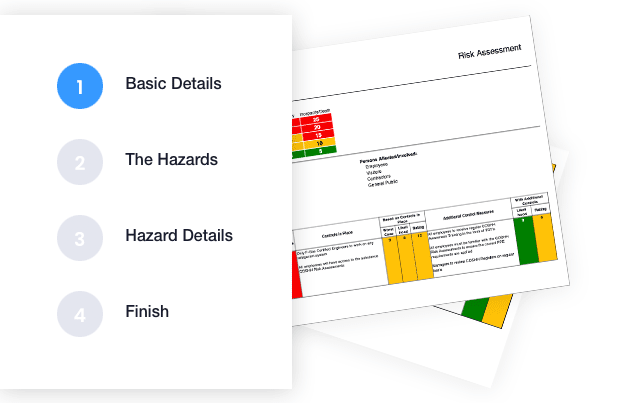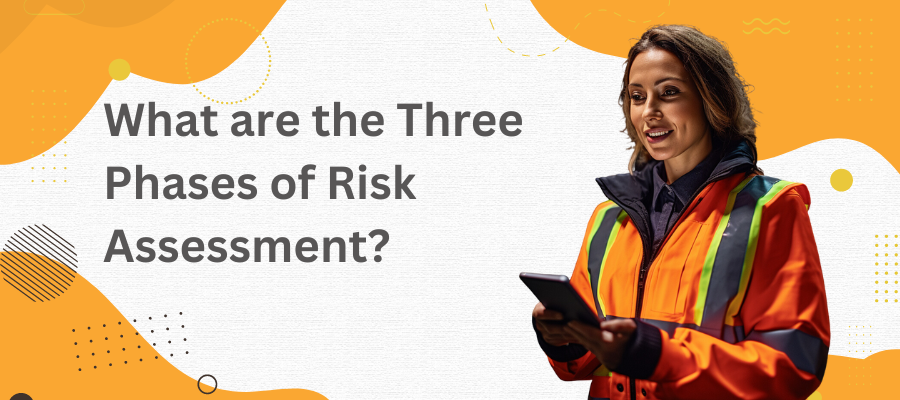Risk assessment is a crucial process in various fields, from construction and healthcare to cybersecurity and finance. It involves identifying potential hazards, analyzing the likelihood and severity of their outcomes, and implementing measures to control and mitigate risks. Effective risk assessment helps organizations to prevent accidents, reduce losses, improve decision-making, and enhance resilience. In this article, we will explore the three phases of risk assessment, starting with the basics of understanding risk assessment.
Understanding Risk Assessment
Before we dive into the three phases of risk assessment, let’s define what risk assessment is and why it’s important. Risk assessment is the process of identifying, analyzing, and evaluating risks to people, property, or the environment. It aims to identify potential hazards and estimate the likelihood and severity of their consequences. By analyzing risks, organizations can better understand the threats they face and take measures to reduce or mitigate them.
Definition of Risk Assessment
Risk assessment can be defined as a systematic process of identifying, analyzing, and evaluating risks that may arise from various sources, such as natural disasters, accidents, human errors, malicious attacks, or financial losses. It involves gathering and analyzing data, assessing risks based on predefined criteria, and developing strategies to manage risks.
Importance of Risk Assessment
Risk assessment is important for several reasons. Firstly, it helps organizations to comply with legal and regulatory requirements, such as health and safety standards, environmental regulations, or data protection laws. Secondly, it enables organizations to identify potential risks and take preventive measures to avoid or minimize their impacts. Thirdly, it facilitates better decision-making by providing information on the risks and benefits of different options. Fourthly, it enhances accountability and transparency by documenting the risk assessment process and the decisions made.
It is important to note that risk assessment is not a one-time event, but rather an ongoing process that should be reviewed and updated regularly. This is because new risks may emerge over time, or existing risks may change in severity or likelihood. Therefore, organizations should have a risk management plan in place to ensure that risks are identified, assessed, and managed effectively.
Phase 1: Identification of Hazards
The first phase of risk assessment is the identification of hazards. Hazards can be defined as any source of potential harm or damage that may cause injury, illness, or loss. Some examples of hazards include chemical substances, physical objects, biological agents, fire, explosion, radiation, noise, vibration, or ergonomic factors.
Types of Hazards
Before we can identify hazards, we need to understand the different types of hazards that exist. Hazards can be classified into various categories, such as physical, chemical, biological, environmental, or ergonomics. Physical hazards include anything that can cause injury or damage through direct contact, such as machinery, knives, or falls. Chemical hazards include anything that can cause harm through exposure to toxic or flammable substances, such as gases, liquids, or dust. Biological hazards include anything that can cause disease or infection through exposure to viruses, bacteria, or fungi. Environmental hazards include anything that can cause harm through exposure to extreme temperatures, weather conditions, or natural disasters. Ergonomic hazards include anything that can cause injury or discomfort through poor posture, lifting, or repetitive motions.
Methods for Identifying Hazards
Once we know what hazards are, we need to find them. There are various methods for identifying hazards, depending on the context and purpose of the risk assessment. Some common methods include workplace inspections, job hazard analyses, incident investigations, audits, and surveys. These methods involve observing, interviewing, and analyzing data to identify hazards and their potential consequences.
Documenting Identified Hazards
Once we have identified hazards, we need to document them. Documentation is crucial for several reasons. Firstly, it helps to ensure that all hazards are recorded and communicated to relevant stakeholders. Secondly, it provides a basis for further analysis and evaluation of risks. Thirdly, it enables the development and implementation of risk control measures. Documentation can take various forms, such as checklists, reports, diagrams, or photos.
Phase 2: Risk Analysis and Evaluation
After identifying hazards, we move on to phase 2 of risk assessment, which is risk analysis and evaluation. This phase involves estimating the likelihood and severity of potential harm or loss caused by the identified hazards and comparing them with predefined risk criteria.
Qualitative vs. Quantitative Risk Analysis
Risk analysis can be qualitative or quantitative, depending on the level of detail and the type of data used. Qualitative risk analysis involves using subjective judgments, expert opinions, or descriptive scales to assess the significance and likelihood of risks. Quantitative risk analysis involves using numerical models, simulations, or statistics to estimate the probability and impact of risks.
Risk Evaluation Criteria
Risk evaluation criteria are used to compare the estimated risks against predefined thresholds or standards. These criteria can be based on legal or regulatory requirements, industry standards, or organizational objectives. Some common criteria include likelihood, severity, frequency, detectability, and tolerability.
Prioritizing Risks
After evaluating risks, we need to prioritize them based on their significance and urgency. Prioritization enables us to focus on the most critical risks first and allocate resources effectively. Prioritization can be based on various factors, such as the likelihood and severity of harm, the cost and feasibility of control measures, or the strategic importance of the risks.
Phase 3: Risk Control and Mitigation
The third and final phase of risk assessment is risk control and mitigation. This phase involves implementing measures to reduce or eliminate the identified risks, monitor their effectiveness, and review and revise them as necessary.
Risk Control Measures
Risk control measures can be classified into several categories, such as engineering controls, administrative controls, personal protective equipment (PPE), or emergency response plans. Engineering controls involve modifying or designing the work environment or equipment to eliminate or reduce hazards. Administrative controls involve changing work processes or procedures to reduce the exposure to hazards. PPE involves using equipment or clothing to protect workers from hazards. Emergency response plans involve preparing for and responding to emergencies caused by hazards.
Implementing Risk Mitigation Strategies
Once control measures are selected, we need to implement them and monitor their performance. Implementation involves communicating and training workers on the control measures, ensuring that the measures are properly installed and used, and monitoring their effectiveness. Monitoring can involve regular inspections, audits, or feedback from workers. If the control measures are not effective, we need to revise them and try again.
Monitoring and Reviewing Risk Controls
The final step in risk assessment is to monitor and review the control measures and the risk assessment process itself. Monitoring involves assessing the performance and effectiveness of the control measures, identifying any new hazards or risks, and reviewing incident reports or near-miss events. Reviewing involves reflecting on the risk assessment process itself and identifying any areas for improvement, such as better data collection, analysis, or communication.
Effortlessly create risk assessments in a few clicks
Designed to help you effortlessly create comprehensive risk assessments in just a few clicks. Say goodbye to time-consuming manual processes. With real-time insights, customisable templates, and seamless collaboration features, Evalu-8 EHS streamlines risk management.

Conclusion
Risk assessment is a critical process that helps organizations to prevent accidents, reduce losses, and enhance resilience. The three phases of risk assessment involve identifying hazards, analyzing and evaluating risks, and implementing measures to control and mitigate risks. While the risk assessment process can be complex and challenging, it is essential for ensuring the safety and well-being of workers, the public, and the environment. By following best practices and standards, organizations can effectively manage the risks they face and create a safer and healthier workplace.
See Evalu-8 EHS in action
The leading choice of EHS software for small to large companies in the manufacturing sector that want to get control of there safety




